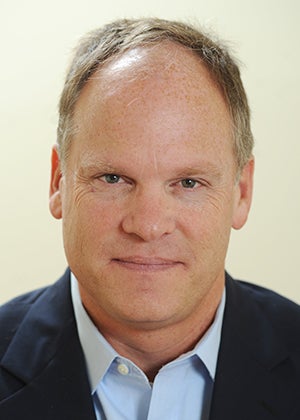Taking breast cancer like a man
Published 9:39 am Sunday, October 2, 2016

- David Magee
Almost a year has passed since my entire right breast was surgically removed.
The 7-inch scar running from my breastbone to underneath my armpit is keloid, so it’s nothing pretty to look at when I discard a shirt at the beach, and it still tingles with strange sensations at unpredictable times and spots.
My shirts don’t fit right after the mastectomy, either.
On the left side, my 50-year-old man’s chest is out of balance from the scalped right side that clings tight to the muscle. I am conscious of my lopsided presentation when greeting those I have not seen in a while but I don’t even try to explain.
The breast cancer diagnosis last fall wasn’t a complete shock, since I figured out the problem myself after some disturbing signs – bleeding from the right breast and a hard-painless lump. By the time I arrived at UAB Hospital in Birmingham for testing, I knew the direction this was heading.
The doctor suggested early on it wasn’t good, and chemotherapy seemed a given. But I was fortunate, by a fraction of a millimeter, and spared most everything but my right breast.
Being a man, that didn’t seem like a problem at all. Take it, I told them.
Take two if you want.
But, being a man made other aspects more challenging.
In the waiting room for a test, a technician assumed the breast cancer diagnosis on the form in her hands belonged to a woman.
“Mrs. Magee,” she called out loudly into the crowded waiting room. “Mrs. Magee.”
My head hung low as I walked toward her.
“It’s me,” I said. “Mrs. Magee.”
She was puzzled.
“Just show me where to go.”
She pointed down a hallway flanked with rooms filled with women.
“May want to cover your eyes,” she said.
Maybe you should shout, “Man on the floor.”
“Just cover your eyes,” she said.
Right. No sense getting all the patients worked up.
Another woman who delivered care packages for recently diagnosed cancer patients had heard that I was a man with breast cancer – “we get one every now and then,” she said. But she didn’t back away from handing over the pink care package filled with items fitting for a woman.
She was so nice, a breast cancer survivor herself, that I was touched, albeit touched with a blushing face.
But my biggest scar came when I was checking out of the hospital. The nurse would not let me leave unless I put on a lacy satin top with pointed breast cones and pads to fill in the cone that matched with the side where the breast was removed.
She told me it was mandatory for all mastectomy patients at departure.
“I’m not wearing that,” I said.
“Can’t leave without it,” she said.
The lacy top was designed to hold the baseball-sized drainage bulbs connected to tubes from my surgical site.
“I will just hold (the drainage bulbs) in my lap,” I told her.
“Nope,” she said, pulling the top over my head.
Bad words scrambled through my mind. But I needed to leave, and was in too much pain to argue. My breast had just been removed and my arm was in a sling and the surgical gash felt like 46 wasps stinging.
So I donned the lacy top and left the hospital.
“Don’t look,” I told family members.
Painkillers helped with just enough haze to get me home. But they weren’t strong enough to let me look beyond the moment, much less forget about it.
It’s nothing to complain loudly about, of course. I am still alive, haven’t needed chemotherapy, and didn’t have use for my right breast anyway.
It is all just a reminder this awareness month that men can be breast cancer patients, too.
David Magee is Publisher of The Oxford Eagle. You can contact him at david.magee@oxfordeagle.com





